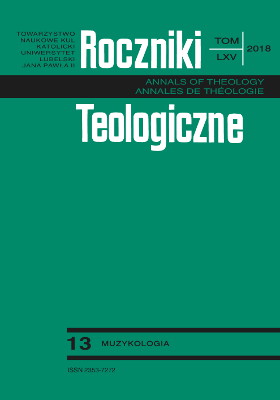Sztuka „akompaniamentu” klawesynowego w XVIII-wiecznej Francji Zasady realizacji basse continuë według anonimowego rękopisu Traité d’accompagnement du clavecin et abrégé de composition (c. 1700)
The Art of Harpsichord Accompaniment in 18th-Century France. The Principles of ‘Basse Continuë’ Realization According to Anonymous Manuscript ‘Traité D’accompagnement du Clavecin et Abrégé de Composition’
Author(s): Miłosz AleksandrowiczSubject(s): Christian Theology and Religion, Fine Arts / Performing Arts, Music, Theology and Religion, Pastoral Theology
Published by: Towarzystwo Naukowe KUL & Katolicki Uniwersytet Lubelski Jana Pawła II
Keywords: Baroque; harpsichord; organ; basso continuo; polyphony; ancient music; French music; ornaments; Règle de l’octave
Summary/Abstract: This article concerns the performance practice of harpsichord-playing in 18th century France. The starting-point for reflection is anonymous manuscript ‘Traité d’accompagnement du clavecin et abrégé de composition’ (ca.1700) written in the times when the French harpsichordists and organists begin to open up to the style of keyboard playing developed in 17th century Italy. In this manuscript we can find the explanation of the system of abbreviation utilized to mark chordal relationships and the remarks on harpsichord ‘accompaniment’, ie the rules of playing a multi-voice harpsichord part based on the marks written above the bass line (the so-called ‘basse continuë’).
Journal: Roczniki Teologiczne
- Issue Year: 65/2018
- Issue No: 13
- Page Range: 183-191
- Page Count: 9
- Language: Polish

